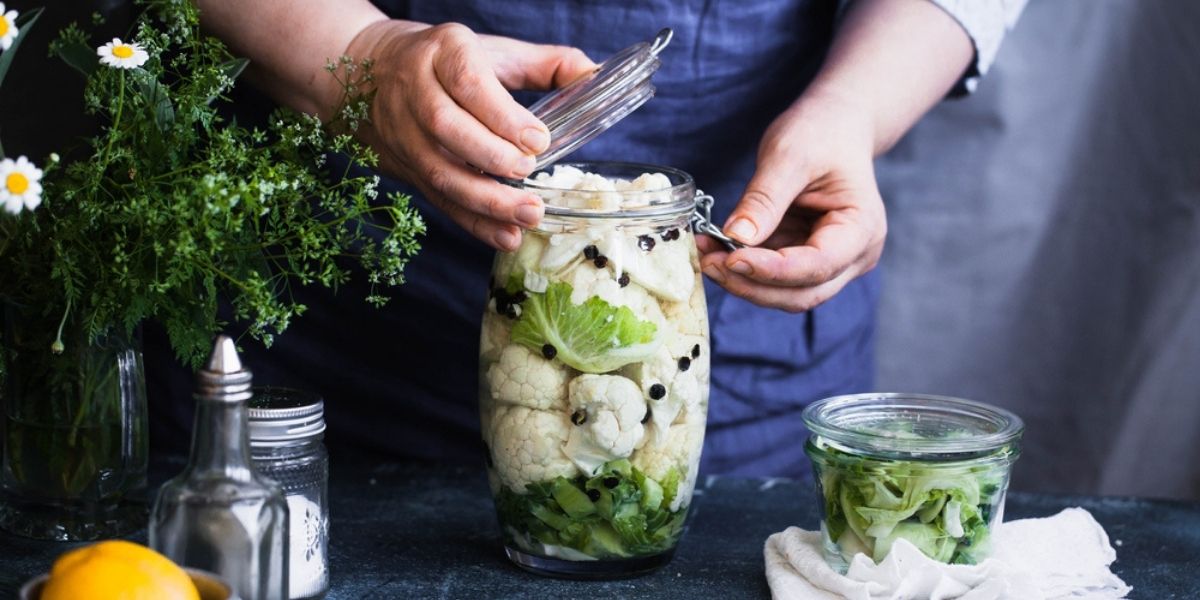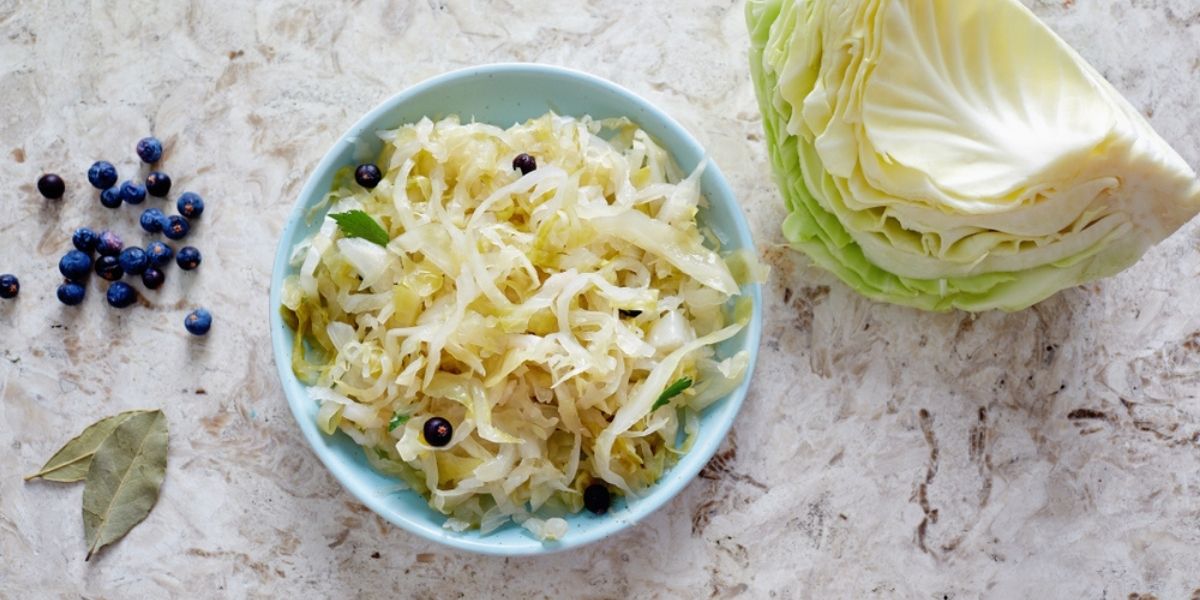-
Locations
Campuses in EuropeCampuses in The AmericasCampuses in AsiaLe Cordon Bleu International
- Online Learning
Contact your local representative - Our Story
- Programmes
- Brochures
- News & Events
- Contact
- Find Course

Are you looking for a fermentation beginner’s guide to perfecting your jars of preserved produce? Boost your immune system naturally and learn the art to homemade fermented vegetables using this vital rule of thumb!
Fermentation is a technique for preserving foods. With evidence of fermented vegetables dating as early as 6000 BC, fermentation is a traditional method to store and nutritionally enhance food. The most common process to ferment foods, such as vegetables, is in jars filled with a mix of salt and water (called a brine).
Through the rise of adopting sustainable food practices and understanding of the health benefits of fermented vegetables, the main benefits of fermentation are:
There are many different methods to ferment vegetables, such as leaving them out in the sun, bruising the vegetables, or submerging them in liquid. If you’ve been experimenting with how to ferment vegetables at home, you may be familiar with the process of making your own fermented vegetables with salt and water.
Fermenting vegetables is different from pickling vegetables. Pickled foods are sour because they are soaked in acidic brine, while fermented foods are sour because of a chemical reaction between naturally present sugars and bacteria.
The easy way to start fermenting vegetables at home begins with a clean, sterile jar, salt, water and some vegetables.
The best vegetables for fermentation are dependant on your diet, food preferences and what is locally available to you. Most people like to start with popular vegetables such as cabbage, cucumbers and peppers (capsicums) but the options for what foods you can ferment are endless!
The type of salt recommended to ferment with is an unrefined salt that is full of natural vitamins and minerals. One of the best types of salt to ferment with is sea salt. Sea salt contains several nutrients, including trace amounts of magnesium, potassium and calcium. Picking salt and Kosher salt are also good to use.
The type of salt you should avoid in fermentation is Iodized salt. Iodized salt is a type of table salt that has been sprayed with potassium iodate, dextrose and anti-caking agents. Iodine can cause harmless darkening of foods over a long time and tends to inhibit the beneficial bacteria in fermentation, which is why it is often avoided when preserving or fermenting foods.
The trick to perfecting your fermented vegetables is to be precise with the salt and water ratio. You will find there is a lot of trial and error involved to obtain your preferred taste, as it is a fine balance.
Salt is a critical ingredient and when used in the right proportions, creates the perfect environment to control the growth of microorganisms and create a ' happier' ferment. Salt in fermentation encourages the growth of healthy bacteria, while at the same time kills off bad bacteria. We need to be precise when measuring the salt and water, especially when fermenting vegetables that will be submerged in brine.
One rule of thumb is to use 1-3 tablespoons salt per litre (4 cups) of water. The easiest way to calculate the exact amount of salt needed is this simple metric calculation:

TIP: All salts differ in weight, so ensure you are precise in weighing the amount of salt based on the type you use.
Many experienced fermenters suggest different amounts of salt be used, this is something you will become familiar with as you trial and taste various measurements. Suggestions range between 1.5%-5%, depending on the vegetable, for example:
Many recipes will tell you the brine percentage needed for that vegetable, but again, it is trial and error. The weight of the vegetables and size of the jar (for the amount of water) are also variables you may need to consider when calculating the amount of salt needed, as well as the most suitable method for the particular vegetable.
The dry salting method: Toss the vegetables with salt and allow the salt to draw liquid from the vegetables. For this, the typical amount of salt to be used would be approximately 1 tablespoon for every 680 grams of vegetables. The salt effectively stabilises the environment while the bacteria involved in the fermentation take hold. This technique is commonly used for sauerkraut.
The pre-brining method: Mix a brine by dissolving salt in water and then soaking the vegetables in the brine. This is followed by draining off the brine and then compressing the vegetables to encourage further liquid to escape the vegetables and cover the vegetables for the fermenting process. A stronger brine of 4 tablespoons of salt for 1 litre of water is effective for this method.
The brining method: Mix a brine of salt and water, then submerge the vegetables within that brine. This method is commonly used for making pickles and 1.5% – 5% brine is recommended. This technique is often used for fermenting vegetables that don’t lend themselves to being compressed and submerged in the brine, such as asparagus, green beans, whole jalapenos, for example.
The art of fermentation is an age-old process which requires some precision and knowledge. The health advantages and environmentally conscious benefits makes fermentation the perfect skill to adopt today. Mastering the salt to water ratio as the trick to great fermented vegetables will not only allow you to perfect the craft, but will also guide you in understanding it’s important role in fermentation when starting out.

Copyright © 2024 Le Cordon Bleu International B.V. All Rights Reserved.